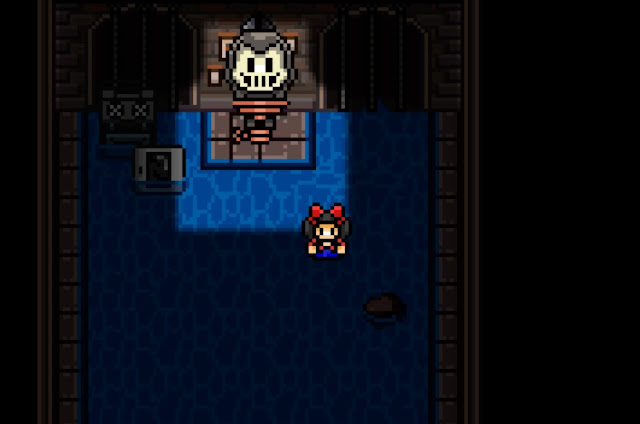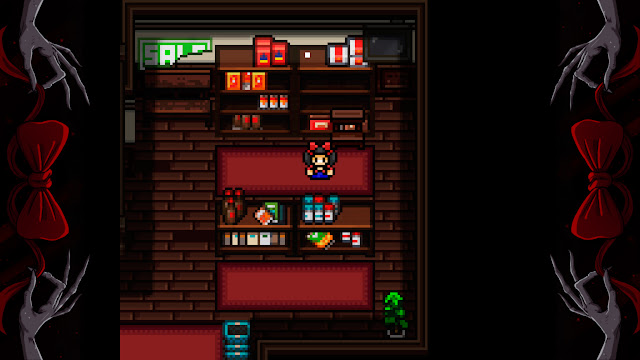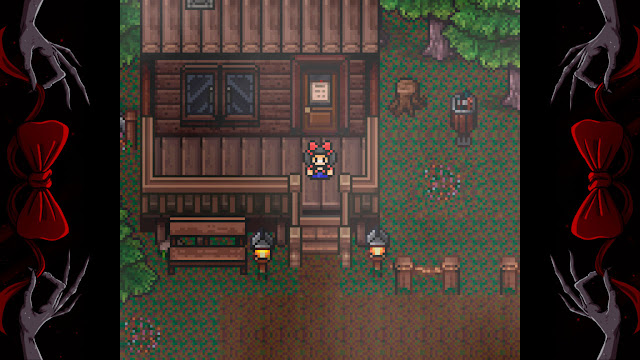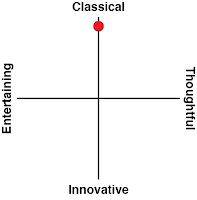Review by Matt S.
Last year I played – and absolutely loved – a tiny little indie horror title called Deadus. It’s a horror game that has been designed to play on the original Game Boy, and as such so you needed an emulator (or a device with a Game Boy emulator built onto it), which was messy, but the game itself was so worthwhile. You wouldn’t think a device as primitive as the Game Boy could pull off horror, but Deadus had the atmosphere, the intensity, and the storytelling. It worked.
Red Bow looks like a similar effort. Rather than emulate the monochrome Game Boy, this one looks like a “new” Game Boy Color game. Unlike Deadus, which was actually built as a Game Boy title, Red Bow is merely a homage to the aesthetics and design elements, which means it plays natively on devices such as the Switch. Like Deadus, it similarly tries to be a horror experience. Unfortunately, it doesn’t work.
The problem is the writing. Horror is a difficult genre to do well, because while people generally come for the creepies and bloodletting, what distinguishes good horror is when it tells a nuanced story of the human condition. One of the reasons that horror is one of the most flexible and enduring storytelling genre across history is that it always reflects the tensions and fears of the culture of the time, but Red Bow doesn’t really do any of that, apparently believing that atmosphere is sufficient to create that sense of horror. It’s a short game, split into tiny micro-chapters, and the links between them are tenuous at best.
The sensation of guilt seems to be the common thematic element – in one micro-chapter you need to help a woman who committed suicide out of sensations of guilt. Then there’s a chapter in which you need to deal with a tragic figure that feels guilty for his girlfriend turning into a monster when he said she was beautiful (really). Then there’s a ship captain whose drinking habits got his crew drowned. However, while they might share these themes, there’s nothing of substance linking them, and they’re all such varied applications of guilt that they don’t feel like they belong to the same game.
The other common thread is that each chapter features a bit of red ribbon as a key element. It’s a motif, but – and it’s truly weird – nothing is done with it. You’ll need to use the ribbons to further the narrative, and it’s clear that the red ribbon is meant to have some kind of symbolic meaning, but in practice it’s there and does nothing more for the overall narrative than the crowbar that you’ll use to lift up a manhole. Between these two key themes being so shakily implemented, my overall experience of Red Bow is that of confusion – I didn’t get a sense of what the game wanted to tell me. Unless, of course, its point was “hey look I’m a Game Boy Color game! And creepy!”. If that was the point then it’s mission accomplished, but it’s not much of a mission in the first instance.
The gameplay is quite limited – you need to scour a tiny few environments for items, which you then apply, point-and-click style, to open doors or kick conversations down the road. It’s not very well implemented, though. Short as chapters are, it is frustrating to play a chapter through to the end only to find you locked yourself into a game over by applying the items in the wrong order. For example, in one chapter I needed to douse an area with oil to set on fire before luring a monster into the area. However, it’s possible to lure the monster before dousing the area, and if you do that, the only available ending is the game over. Good adventure game design – particularly in the modern era – gives players a head’s up in some way before letting them lock them into a game over.
Another time I believe I had the opportunity to release a monster (or is it?) from a prison cell, but the trigger that would allow me to release them apparently came somewhere between the final time I attempted to interact with the door lock mechanism, and the moment I triggered the end of the chapter. I’ll need to play the entire game again to figure out whether I can actually let that monster out, and the impact that doing so will have. That’s if I can be bothered playing through it again. I’m not sure the narrative will suddenly pick up on the basis of that decision.
All of this is a learning experience for a young developer, of course, and there are moments that show there’s plenty of talent ticking under the surface. The game is gorgeous to look at, for a start, with sprites that do indeed remind me of the glories of the Game Boy Color. Some of the scenes, too, show a true understanding for the horror aesthetic. I was never frightened, but there are more than a few unsettling points across the adventure. Once the ability to write narrative gets there, this will be a developer to watch.
It’s a super-short indie project, so it almost feels unfair to throw a score onto Red Bow. It’s just not a game to put on the same kind of scale as major blockbusters from Nintendo. But, then again, the game is a commercial project and sits on the same virtual store shelf as Nintendo’s games. The reality is that Red Bow struggles to understand how horror game stories are told, and adventure games are designed. There are some ideas buried in there, and when the developer is more experienced it would be great to see him revisit this but Red Bow itself its a bit too hollow for its own good.
– Matt S.
Editor-in-Chief
Find me on Twitter: @mattsainsb










